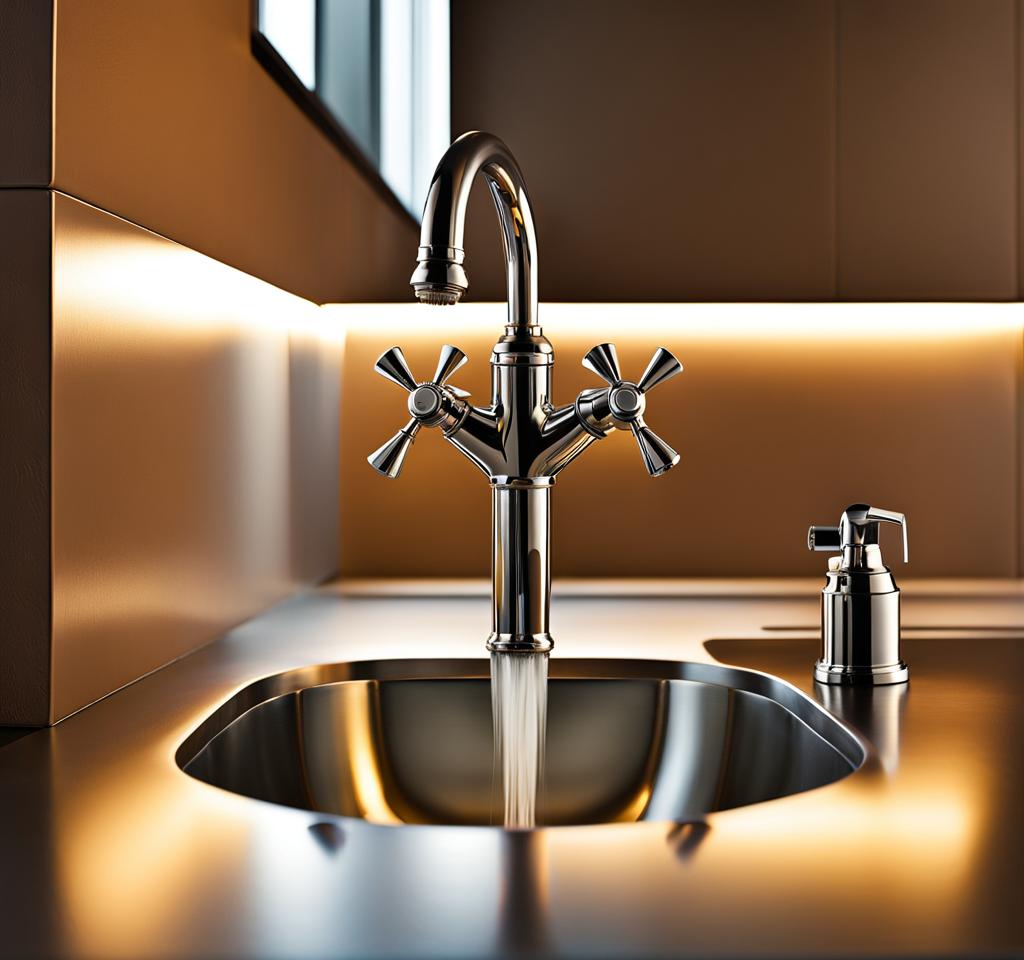Only to be greeted by a trickle of water. Frustrating, isn’t it? Low water pressure in sinks can disrupt even the simplest tasks, leaving you exasperated. Fortunately, I’m here to guide you through conquering this vexing issue. Together, we’ll explore the root causes, troubleshooting strategies, and effective solutions to restore optimal water flow, ensuring your sink regains its full potential.
Bid farewell to the aggravation of weak water pressure. Prepare to embark on a journey where I’ll share my hard-earned expertise, garnered from years of tackling plumbing conundrums. By the end, you’ll be equipped with the knowledge and confidence to confront low sink water pressure head-on, transforming your daily routines into effortless, water-fueled bliss.
Causes of Low Water Pressure in Sinks
Before we delve into solutions, it’s crucial to understand the underlying reasons behind low water pressure in your sink. By identifying the culprit, you’ll be better prepared to address the issue effectively. Common causes include:
Clogged Pipes: Over time, mineral deposits, hair, and debris can accumulate within your pipes, restricting water flow and reducing pressure. This buildup acts like a bottleneck, impeding the free passage of water to your sink.
Faulty Aerators: The aerator, that small mesh screen at the faucet’s end, can become clogged with sediment or mineral buildup, limiting the amount of water that can pass through. A simple cleaning or replacement may be all that’s needed to restore optimal pressure.

Corroded or Leaky Pipes: Aging pipes are susceptible to corrosion, leading to internal leaks that can siphon away water pressure. Additionally, unseen leaks in the plumbing system can cause a significant drop in water pressure throughout your home.
Water Supply Issues: In some cases, low water pressure can stem from issues with the municipal water supply or even your home’s main water line. If the problem persists across multiple fixtures, it’s worth investigating the source.
Troubleshooting Tips for Weak Sink Water Flow
Before diving into more complex solutions, let’s explore some easy troubleshooting steps you can take to potentially resolve the issue of low water pressure in your sink:
Clean the Aerator: Unscrew the aerator at the faucet’s end and thoroughly clean it using a small brush or compressed air. Removing any debris or mineral buildup can often restore proper water flow.
Check for Leaks: Inspect the visible pipes under your sink and around the faucet for any signs of leaks or drips. Even a small leak can significantly impact water pressure.
Isolate the Issue
To determine whether the problem is localized or system-wide, compare the water pressure in your sink to other fixtures in your home. If all faucets and showerheads exhibit low pressure, the issue likely lies with the main water supply line or your home’s plumbing system. However, if the problem is isolated to a single sink, the solution may be simpler and more cost-effective.
By following these initial troubleshooting steps, you may be able to quickly identify and rectify the cause of low water pressure in your sink without the need for more extensive measures.
Solutions to Boost Sink Water Pressure
If the troubleshooting techniques fail to yield satisfactory results, fear not, for I have an arsenal of solutions that can vanquish the scourge of low sink water pressure:
- Pipe Descaling: Over time, mineral deposits can accumulate within your pipes, gradually restricting water flow. Descaling solutions, specially formulated to dissolve these buildups, can effectively clear the blockages and restore optimal pressure.
- Pipe Replacement: In severe cases, corroded or damaged pipes may require replacement. While this option can be more expensive, it offers a long-term solution and can significantly improve water pressure throughout your home.
- Pressure Regulator Adjustment: If your home’s water pressure regulator is set too low, adjusting it to a higher setting can instantly increase the water pressure at all fixtures, including your sink.
- Water Pressure Booster Pump: For homes with consistently low water pressure from the municipal supply, installing a booster pump can amplify the water pressure, ensuring a steady, powerful flow at your sink.
It’s important to note that tackling some of these solutions may require the expertise of a licensed plumber, especially when dealing with complex plumbing systems or municipal water supply issues. However, with the right approach, you can bid farewell to the frustrations of low water pressure in your sink and embrace the convenience of a powerful, unimpeded water flow.
While resolving the current issue is paramount, implementing preventive measures can help maintain optimal sink water pressure and avoid future hassles. Here are some proactive steps to consider:
Regular Maintenance: Periodically inspect and clean your faucet aerators, as well as the pipes under your sink. Removing any debris or mineral buildup can prevent potential clogs and blockages that could lead to reduced water pressure.
Water Softener Installation: If you live in an area with hard water, installing a water softener can significantly reduce mineral deposits within your plumbing system, prolonging the lifespan of your pipes and minimizing the risk of clogs.
Pressure Regulator Checks: Regularly monitoring and adjusting your home’s water pressure regulator can ensure that the water pressure remains within an optimal range, preventing excessive strain on your plumbing system and minimizing the risk of leaks or pipe damage.
By embracing a proactive approach and incorporating these preventive measures into your routine, you can maintain a consistently powerful water flow at your sink, ensuring effortless daily tasks and peace of mind.

This is where you’ll find inspiration to create a stylish and beautiful dream home.